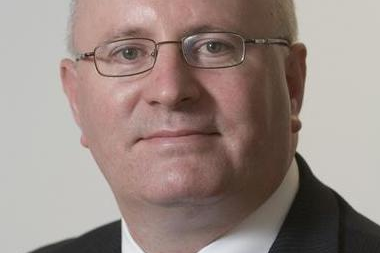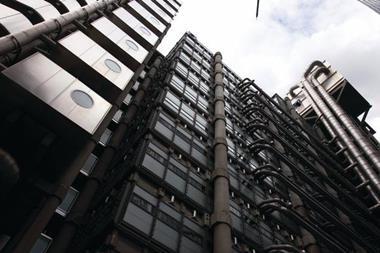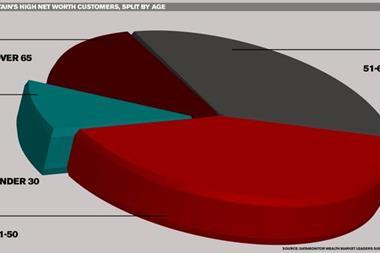A resurgence in the market for fine wines and other tangible assets is creating opportunities for insurers and brokers
Now that the party-killer credit crunch is lifting, why not pop the cork of a 1982 Chateau Petrus to celebrate? It’ll cost you, though: a six-litre bottle of the stuff was just sold by Sotheby’s to a wine buff in China for HK$726,000 (£58,343). It seems that, for the wealthy, it’s time to enjoy one’s self again.
And if this is happening in the high net worth market, it could be cause for celebration for some brokers and insurers too.
“If one looks at the sales of fine art, valuables and collectibles at the moment, there are areas of genuine strength out there,” Hiscox fine art underwriter Robert Korzinek says.
He considers the record-breaking sale of the Chateau Petrus to be part of something bigger in the fine and rare wine market.
“It’s partly driven by the fact that Hong Kong earlier this year abolished all taxes on wine. That, coupled with the strength of the Hong Kong and Chinese markets at the moment, and their appetite for fine and rare wines, has led to a surge in demand from Hong Kong and China. That has buoyed the international market for fine and rare wines.”
And it’s not only the wine market that’s seeing a resurgence. According to Aon Private Risk Management, the percentage of a family wealth invested in tangible assets, such as property, art and cars, has doubled on average over the past year, following the drop in the investment markets.
This, Aon says, is creating opportunities for insurers and brokers in terms of offering their clients heightened protection.
“Investment volatility has meant families are placing more emphasis on protecting their tangible assets. In turn, the role of the insurance broker has become key to insulating wealth by educating and boosting understanding on tackling risks,” Aon Private Risk Management’s managing director Charles Hamilton Stubber says.
Aon, for example, has launched an insurance risk auditing service. The service reviews tangible assets, liabilities and ‘personal well-being’ (travel/medical, kidnap and ransom, and so on), and then looks at whether coverage is adequate.
Not everyone agrees on the health of the market. AIG UK’s head of private clients group, Ann Owen, says she’s seen a slowdown.
“Normally, during the new registration dates, you see an influx of brand new cars. But for the past year it really hasn’t been like that. 2009 has really slowed down, even at this end of the market, and we do deal with the higher end of the high net worth market. We’re also seeing clients selling artwork, putting it up for auction – things that we wouldn’t necessarily have seen before.”
She adds: “We haven’t seen people going bankrupt or selling their houses, because they’ve got a lot of wealth built up over the years. But we are seeing a slowdown of purchasing and some of the super luxury items like the yachts being sold. We’re hoping by the end of this year, or beginning of next year, things will start to pick up again.”
On the rebound
Still, others claim the market has been springing back, even if only modestly. Allianz-owned Home & Legacy managing director Barry O’Neill hasn’t noticed a “massive” increase in the market. But over the past six months he has seen a noticeable pick-up in art, jewellery, and even the purchase of high-value vehicles. He has also noticed more clients buying investment property over the last 18 months.
“I think it’s partly because clients have been looking at the kind of returns they’ve been getting on their cash investments. House prices are generally depressed, so it’s been a good time to buy in that sense. Our clients who have got fairly good liquid assets, and quite a lot of cash, will get a better long-term return on that cash in an investment property than they can get from holding the cash in more liquid investments.”
In March, Home & Legacy expanded into the motor market and launched a new product with insurers Chaucer and Groupama.
“We very much did that because we wanted to widen our relationship with our clients, and we could see they were looking for better deals generally in terms of household and motor. Our clients who do have high-value vehicles have multiple vehicle ownership.”
Still savvy
While high net worth clients tend to be sophisticated investors, they’re also notorious for indulging in their passions. Last year, O’Neill says, clients put those passions on ice.
The consensus in 2009, however, is that the ice is thawing.
“If you look back to last year, clients were being much more cautious about putting their money into those things,” O’Neill says. “But this year they’re returning back more to what’s normal behaviour for them: spending their money on the things they’re passionate about.”
Still, he warns, these clients never just throw money around, Many have achieved their wealth by managing their money meticulously, and they’re being especially careful in the wake of the credit crunch.
“They’re still very much looking for the best deal they can get in terms of their home insurance, fine art and motor insurance. So, while there’s more activity, they’re still saying, much more so than in previous years: ‘Is this the best deal you can get for me? Is this the right cover, the best price?’”
So the way to win new business in the current climate, O’Neill says, is to have a package focused on both price and high-quality service.
Most commercial insurance brokers will have at least a couple of high net worth clients. O’Neill suggests that brokers look carefully at their client list, and consider which clients have more complex needs.
Underinsurance has always been a problem in the high net worth market, but Aon says the shortfall could now be bigger than ever.
Aon Private Risk Management executive Harry Dawe-Lane says: “Following a decade of prosperity, the size and value of a family’s portfolio of insurable assets has significantly grown. During this period the insurance may not have been reviewed and updated, which can mean sums insured are incorrect and there are gaps or duplications in cover.”
AIG’s Owen is also concerned. “It’s less of an issue when it comes to cars, because they tend to be much more recent acquisitions,” she says. “But when you’ve got inherited property assets, where you have buildings or contents, and it’s inherited rather than purchased, then there’s potential for lack of understanding of the true value.”
She says general contents is frequently underinsured. For example, clients don’t realise that a set of high-value bed linen can be about £1,500. If you’ve got seven sets of it, it really adds up.
Hiscox believes that clients should have a re-evaluation every three to five years. Korzinek says most collectors don’t do that because valuations are intrusive and expensive.
While interest in tangible assets appears to be growing again, there are still a limited number of high net worth investors. There are an estimated 900,000 to one million households in the UK with more than £200,000 of liquid asset wealth.
Combine this with the fact that clients are more willing to shop around for better deals and it’s clear that insurers and brokers must continue to work hard for high net worth business. IT
Hosted by comedian and actor Tom Allen, 34 Gold, 23 Silver and 22 Bronze awards were handed out across an amazing 34 categories recognising brilliance and innovation right across the breadth of UK general insurance.














































No comments yet